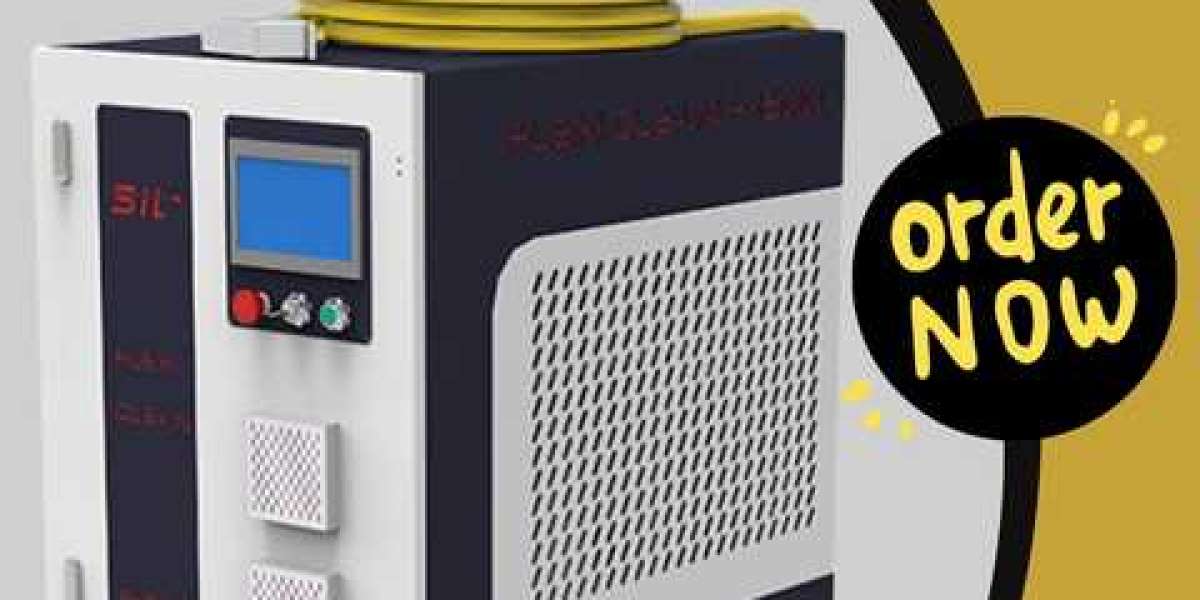The concept may sound like science fiction, but laser rust removal is not only real — it’s revolutionizing the way we restore and maintain metal surfaces. This high-tech tool is gaining attention across various sectors: from automotive workshops and shipyards to restoration projects and manufacturing plants.
So, can a laser rust cleaner truly erase decades of corrosion without harming the underlying metal? Let’s dive deep into how it works, who it’s for, and why it’s becoming an essential tool for modern industries.
What Is a Laser Rust Cleaner?
A laser rust cleaner is a precision tool that uses laser beam technology to remove rust, oxides, paint, or contaminants from metal surfaces. The system emits a focused laser beam that reacts with the rust, causing it to evaporate or disintegrate, often turning it into dust that can be wiped away or vacuumed.
Unlike traditional cleaning methods that physically grind or chemically dissolve the rust (often affecting the base material), laser cleaning is contactless. This means it targets only the unwanted layer without friction or impact on the substrate. It’s not just cleaning — it’s surface preparation redefined.
How Does Laser Rust Cleaning Work?
At the heart of a laser rust cleaner is a laser source — typically fiber-based — that delivers short bursts of high-energy light. These pulses are aimed at the rusted surface using a handheld or automated nozzle. The beam heats the rust rapidly, but the pulse is so short that it doesn’t heat the underlying metal.
This phenomenon is known as "laser ablation." When applied correctly, the laser beam vaporizes the top layer of rust or dirt with pinpoint precision, leaving the clean metal intact and unchanged beneath. There is no abrasive action, no consumables, and no chemical waste — just a clean, dry process.
Applications of Laser Rust Cleaners Across Industries
One of the reasons why laser rust cleaning is creating a buzz is its wide range of applications. This isn’t just a fancy tool for laboratories — it’s a workhorse in several demanding fields:
Automotive Restoration:
Restoring vintage cars or refurbishing vehicle components becomes easier with a laser rust cleaner. Mechanics can clean up engine blocks, wheel hubs, or chassis without harming intricate parts.Construction and Infrastructure:
Steel beams, pipelines, and structural elements exposed to the elements often suffer from rust. A laser rust cleaner allows maintenance teams to clean large areas efficiently with minimal disruption.Marine and Shipbuilding:
Ships, docks, and offshore equipment constantly battle saltwater-induced corrosion. Laser cleaning offers a safe method to maintain these surfaces without the need for solvents.Manufacturing and Fabrication:
In factories, metal parts often need to be rust-free before welding or coating. Laser rust cleaners can prepare surfaces without affecting tolerances or introducing contamination.Art and Heritage Restoration:
Museums and restoration experts use laser technology to delicately clean sculptures, monuments, and tools that date back centuries — ensuring no damage to the original surface.
The Science Behind the Shine
Laser rust cleaners operate on a principle of selective absorption. Rust, typically composed of iron oxides, absorbs laser energy differently than pure metal. When the laser hits the surface, the rust absorbs the energy and heats up quickly — essentially vaporizing — while the metal underneath reflects most of the energy and remains cool.
This precise targeting is what makes the laser rust cleaner so effective. You get accurate cleaning with no grinding, no erosion, and no weakening of the structure.
Furthermore, modern systems often come with adjustable settings to suit different materials and degrees of corrosion. Whether you’re dealing with flaky red rust or fine surface oxidation, the laser can be calibrated for the job.
Why Professionals Are Making the Switch
In today’s competitive landscape, time and efficiency are more important than ever. Sandblasting may still work, but it’s messy, requires a sealed environment, and generates lots of waste. Chemical treatments can be hazardous, costly, and often require disposal management. By contrast, laser cleaning is clean, quiet, and requires no pre- or post-treatment in most cases.
Companies are discovering that using a laser rust cleaner not only streamlines operations but also improves workplace safety and reduces long-term maintenance costs. With growing concerns about sustainability, many are also appreciating the fact that laser rust cleaning is eco-friendly, producing no wastewater or chemical runoff.
Choosing the Right Laser Rust Cleaner
Not all laser rust cleaners are created equal. There are a few different types based on power output and portability:
Low-Power Portable Units (20W–100W): Ideal for light maintenance, small-scale cleaning, or precision work.
Mid-Power Handheld Cleaners (100W–500W): Suitable for most industrial rust removal tasks. These offer a balance of speed and control.
High-Power Systems (1000W+): Designed for heavy-duty operations like shipyards or factories with large, heavily corroded surfaces.
Before investing in a system, it’s important to assess the scope of your rust removal needs. Consider the size of the surfaces, the level of corrosion, and how frequently you’ll be using the cleaner. Some models also offer automation capabilities, perfect for production lines or robotic arms.
Maintenance and Operational Insights
Operating a laser rust cleaner is surprisingly straightforward, especially with user-friendly interfaces now becoming standard. However, proper training is essential to ensure safety and optimal performance. While these machines are not dangerous when used correctly, laser light can harm eyes or skin without the appropriate protective gear.
Maintenance is minimal. Most fiber laser systems have long lifespans (typically over 50,000 hours), and the cleaning heads are built to endure tough environments. Unlike traditional abrasive machines, there’s no need to replace belts, media, or filters regularly.
Cost Considerations
Pricing for laser rust cleaners varies based on power, features, and brand. A low-power portable model might start around $3,000–$5,000, while a high-power industrial system can exceed $20,000. Although the upfront cost is higher than conventional tools, the long-term savings on consumables, labor, and waste management often offset the investment.
Additionally, many manufacturers offer financing options or rentals, allowing small businesses and workshops to access the technology without a massive initial investment.
Safety and Compliance
Laser cleaning equipment must comply with local safety regulations, including laser classification, safety enclosures (for automated units), and proper signage. Many modern units include built-in safety features like emergency stop buttons, laser shielding, and interlock systems.
If you’re using the tool in a shared workspace, consider installing ventilation to remove any dust or fumes generated during cleaning. Most systems produce minimal debris, but safety should never be compromised.
Final Thoughts
The rise of the laser rust cleaner represents more than just a technological breakthrough — it marks a shift in how we think about maintenance, restoration, and surface preparation. With the ability to remove rust without damaging metal, without chemicals, and without generating waste, laser cleaning is shaping the future of corrosion control.
Whether you’re a workshop owner restoring classic machines or an industrial engineer maintaining pipelines, this tool offers a smarter way to deal with rust. It’s clean, fast, precise, and adaptable — making it one of the most powerful innovations in the fight against corrosion.
For professionals who value efficiency and care about sustainability, investing in a laser rust cleaner isn’t just a smart choice — it’s a necessary evolution.


